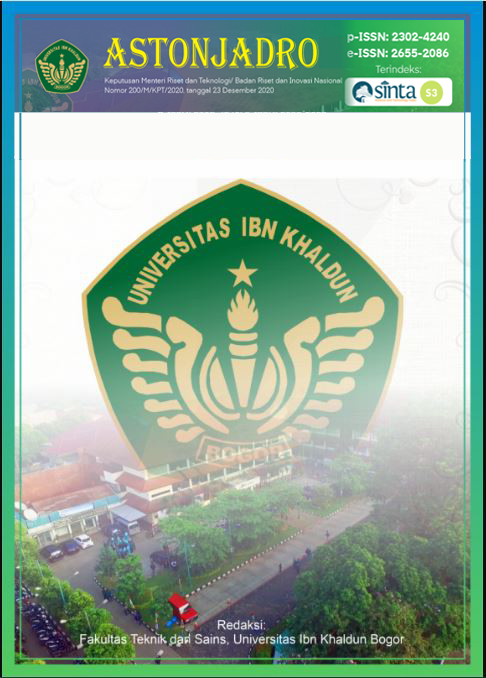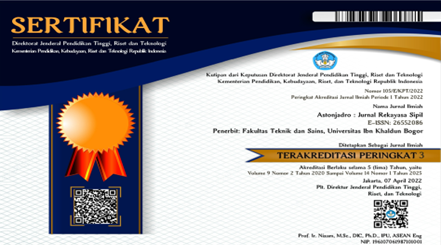Enhancing Risk Management in the SPALD Project
DOI:
https://doi.org/10.32832/astonjadro.v14i1.16447Keywords:
SPALD Project; risk; identification; management; effectiveness; correlation; regression analysis.Abstract
The SPALD Project is currently undergoing a survey phase to gather data on perceptions and experiences related to risks. Data analysis has been conducted using statistical methods to explore the relationship between risk identification and risk management effectiveness in the context of the SPALD project. The analysis results indicate a significant positive correlation between risk identification and risk management effectiveness, with a correlation coefficient of 0.75 (p < 0.01). Regression analysis indicates that the risk identification variable significantly predicts risk management effectiveness (F(1, 123) = 64.32, p < 0.001), with a coefficient of determination (R squared) of 0.52. These findings affirm that enhancing the risk identification process meticulously and comprehensively can enhance risk management effectiveness in the SPALD project in DKI Jakarta. Recommendations for this project include initial risk identification, the use of adaptive risk management systems, implementation of analysis-based mitigation strategies, and team awareness enhancement. These recommendations aim to enhance risk management effectiveness, achieve project objectives, and mitigate potential negative impacts.
References
Hillson, D. (2010). Effective opportunity management for projects: Exploiting positive risk. CRC Press.
Ahsan, K., & Gunawan, I. (2014). Risk management process in construction projects: A case study. International Journal of Innovation, Management, and Technology, 5(3), 188-192.
Kerzner, H. R. (2013). Project management: A systems approach to planning, scheduling, and controlling. John Wiley & Sons.
Söderlund, J., Borgström, S., & Vaagaasar, A. L. (2014). Managing and working in project society: Institutional challenges of temporary organizations. Cambridge University Press.
Pinto, J. K., & Slevin, D. P. (2019). Critical factors in successful project implementation. IEEE Transactions on Engineering Management, 66(1), 3-14.
Hillson, D., & Murray-Webster, R. (2017). Understanding and managing risk attitude. Routledge.
Turner, J. R. (2018). The handbook of project-based management (4th ed.). McGraw Hill Professional.
Olander, S., & Landin, A. (2005). A model for the evaluation of risk management in complex product development projects. International Journal of Quality & Reliability Management, 22(9), 986-1004.
Flanagan, R., & Norman, G. (1993). Risk management and construction. Blackwell Publishing.
Chapman, C. B., & Ward, S. C. (2003). Project risk management: Processes, techniques and insights. John Wiley & Sons.
Tummala, R., & Schoenherr, T. (2011). Assessing and managing risks using the Supply Chain Risk Management Process (SCRMP). Supply Chain Management: An International Journal, 16(6), 474-483.
Marchewka, J. T. (2014). Information technology project management (5th ed.). John Wiley & Sons.
Cooper, D. F., Grey, S., Raymond, G., & Walker, P. (2005). Project risk management guidelines: Managing risk with ISO 31000 and IEC 62198. John Wiley & Sons.
PMI. (2017). A guide to the project management body of knowledge (PMBOK guide) (6th ed.). Project Management Institute.
Hillson, D. (2009). Managing risk in projects. Routledge.
Kerzner, H. R. (2009). Project management: A systems approach to planning, scheduling, and controlling. John Wiley & Sons.
Marchewka, J. T. (2015). Information technology project management (7th ed.). John Wiley & Sons.
Turner, J. R. (2016). The handbook of project-based management: Leading strategic change in organizations (4th ed.). McGraw Hill Professional.
Ward, S., & Chapman, C. (2003). Transforming project risk management into project uncertainty management. International Journal of Project Management, 21(2), 97-105.
Pinto, J. K., & Slevin, D. P. (2019). Project leadership: From theory to practice. Routledge.
Downloads
Published
How to Cite
Issue
Section
License
Copyright (c) 2025 ASTONJADRO

This work is licensed under a Creative Commons Attribution-ShareAlike 4.0 International License.
Paper submitted to ASTONJADRO is the sole property of the Astonjadro Journal. Unless the author withdraws the paper because he does not want to be published in this journal. The publication rights are in the journal Astonjadro.ASTONJADRO
LICENSE
This work is licensed under a Creative Commons Attribution-ShareAlike 4.0 International License.
Based on a work at http://ejournal.uika-bogor.ac.id/index.php/ASTONJADRO













